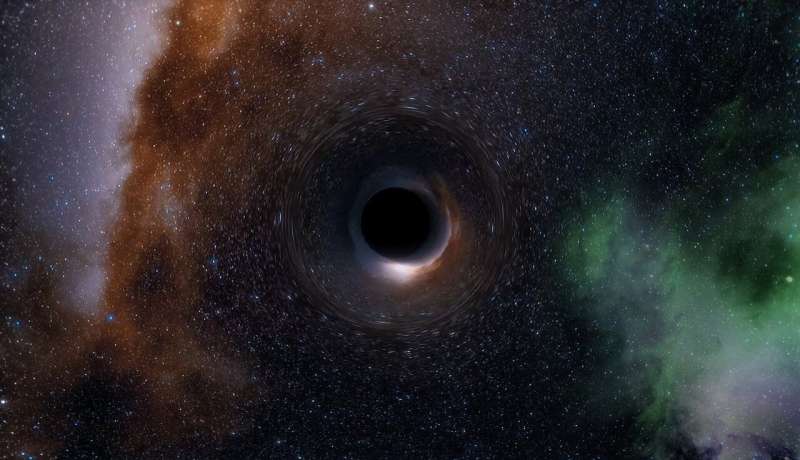Credit: Pixabay/CC0 Public Domain
A team of researchers from Friedrich-Schiller-Universität Jena, Università di Torino and INFN sezione di Torino, has found evidence that the black hole collision that led to an odd gravitational wave detection in 2019 was due to a unique set of circumstances. In their paper published in the journal Nature Astronomy, the group describes modeling and simulating the conditions that could possibly lead to the unique gravitational wave signature.
The development of gravitational wave detectors has led to a better understanding of what happens when black holes collide. In most instances, the data has shown, they occur due to binary stars exploding and then slowly spiraling toward one another until they meet at a gravitational center and merge.
But then, on May 21, 2019, gravitational waves were detected from two black holes merging, but the data showed that neither of the black holes appeared to be spinning and the duration of the signal was shorter than all the others that have been detected. The odd signal left astrophysicists scratching their heads. Now, in this new effort, the researchers believe they have come up with a plausible explanation for the observation.
After modeling all the data from the gravitational wave detectors, the researchers tweaked characteristics until the model created the type of signals that had been observed. It showed that not only were the black holes larger than average, but they had not been part of a binary system. This suggested that instead of originating as a binary system, the two black holes had been solitary objects, each moving randomly through space. By happenstance, they crossed paths closely enough to pull each other closer, and then to collide. For this scenario to unfold, the black holes likely must have belonged to a cluster of black holes, which would increase the chances of random encounters.
The final simulation showed two black holes approaching and then passing near each other, which made them both swerve dramatically, bringing them both back around toward one another until they eventually smashed into each other—the result, the researchers conclude, of a dynamical capture.
More information: R. Gamba et al, GW190521 as a dynamical capture of two nonspinning black holes, Nature Astronomy (2022). DOI: 10.1038/s41550-022-01813-w
Journal information: Nature Astronomy
© 2022 Science X Network
























